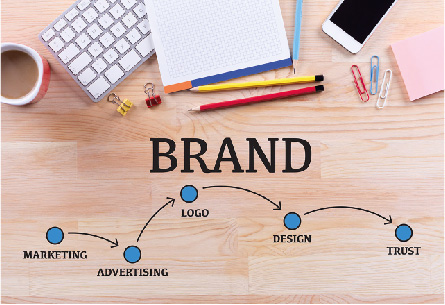The 6 biggest branding errors most startups make
1. NOT HAVING A BRAND.

You’d be amazed how many startups attempt to build business momentum without a brand. Or, just as bad, they slap together a brand in a few minutes thinking that it will be enough to support their business. A real brand demands much more significant effort, including competitive research, market research, creative brainstorming and multiple rounds of development. It’s not something you can improvise, and it’s not something you can procrastinate developing. It needs to be one of the first and biggest priorities for your company, and you need to take the time and spend the money to do it properly.
2. BEING INCONSISTENT.

Merely having a set of established brand standards isn’t enough to guarantee any level of branding success. Your brand guidelines are merely a playbook; you still have to get out there and execute. One of the most important factors for brand success is consistency — adhering to those brand standards, precisely, across every marketing channel and strategy you pursue. This is the only way your customers will become more familiar with your brand over time, and any deviation could compromise that consistent experience.
3. COPYING ANOTHER BRAND (OR BRANDS).

When you’re developing a brand from scratch, you’ll be looking at other brands for inspiration, including competitors and brands you admire. Witnessing these brand strategies in action, you’re going to be tempted to leverage some of the qualities that made those brands successful. To an extent, this is a good idea, and the entire reason you do brand research in the first place. However, you can’t just copy another brand and expect to see the same results. Differentiation is key.
4. FORGETTING CULTURE.

Branding isn’t just about the mask your company wears when dealing with prospective customers and the general public. It should also serve as a template for how you build your internal company culture. For example, if your brand is supposed to be approachable, friendly, and creative, you need to create an office environment that encourages and demonstrates those same qualities. This way, your customer service reps, salespeople, and other customer “touch points” will act in line with your brand standards, and you’ll see higher employee retention as a nice added bonus.
5. NEGLECTING VOICE.

Are you going to speak to your audience formally or informally? How will you structure your blog posts and social media interactions? Who are you going to speak to, and what kind of tone or angle are they going to want to hear? These are important elements of your brand identity that can’t be neglected.
6. OMITTING PERSONAL BRANDS.

Personal brands aren’t always necessary, but they can be a massive asset for your branding strategy. Most people these days don’t trust corporate brands, even ones that they’ve engaged with for many years. Instead, people trust other people. They trust faces, names, and personalities of real experts in the field. The best way to engage with these potential customers is not through a corporate brand directly, but through a series of personal brands connected to your corporate brand as extensions. For example, your CEO or head salespeople might develop their own personalities online to increase the power of the corporate brand they share in common.





